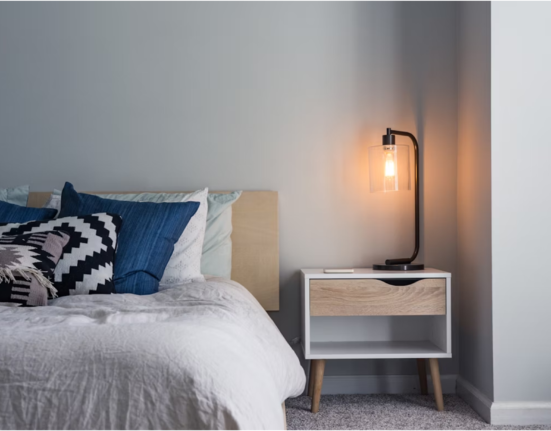For every first time home buyer, there comes a moment when the dream of homeownership shifts from being a distant goal to an exciting reality. It’s a significant milestone filled with a mix of emotions, including joy, anticipation and a touch of apprehension.
As you stand at the brink of this decision, take a moment to breathe and envision the future ahead of you. Imagine the walls that will witness your children taking their first steps, the kitchen where cherished family recipes will be passed down and the backyard that will host summer barbecues and birthday celebrations.
This guide is your companion, on the journey of discovering and purchasing your dream home. We’ll guide you through the steps of the process, acknowledging the emotional roller coaster you’ll ride and offering advice to help you navigate this thrilling adventure. Let’s embark on this path together and explore how to unlock the door to your first home.
Defining Your Dream Home
Take a moment to close your eyes and let your imagination soar. Picture your dream home. Is it a charming cottage with a fence or a sleek modern townhouse? Can you hear the sound of laughter filling the rooms or envision yourself enjoying coffee on a sunny porch?
This emotional connection to your future home will be your guiding light in the search. It’s not about the space or the number of bedrooms; it’s about creating a place where your family can grow, learn and love over the years.
To bring this dream to life, start by making two lists: “must haves” and “nice to haves.”
- Your must haves could include essentials like your neighborhood, quality schools or a yard for your furry friends.
- On the other hand, nice to haves might involve features such as a home office, a gourmet kitchen or a finished basement for fun game nights ahead.
It’s important to consider your needs both today and the future when making decisions. That extra bedroom may not seem useful now, but it could serve as a nursery down the road. If you don’t have kids today, you might not be thinking about being close to schools. But it is an important factor that can impact your home’s value and your family’s needs in the future.
Deciding on Your Budget
Now comes the part that might feel a bit daunting—setting your budget. It’s all about finding the balance between your dreams and what you can realistically afford. Nailing this down is key to your long-term happiness and financial peace of mind.
Begin by examining your finances. What can you realistically manage without overextending yourself? Remember that owning a home involves costs beyond the mortgage, such as property taxes, insurance, maintenance and those inevitable home improvement projects.
While it may be tempting to stretch your budget for that dream home, consider the peace of mind that comes with a cautious approach. Having a financial cushion means reduced stress and increased freedom to enjoy your new home without constant financial worries.
Collaborate with a financial advisor or mortgage specialist to get pre-approved for a loan. This step will provide you with an understanding of what you can afford and enhance your credibility with sellers. Additionally, you will experience a thrill knowing you’re prepared to make an offer when you discover the perfect home.
Determining Key Factors for a Family Friendly Community
When you’re narrowing down neighborhoods, it’s important to let your heart and mind work together. The right community isn’t just about looks; it’s about finding a place where your family can settle down and thrive.
Imagine the comfort of knowing your kids can ride their bikes on streets or walk to a nearby park. Think about the joy of building friendships with neighbors who become like family. Consider these family friendly factors when evaluating areas.
- School Quality: Even if you don’t have kids yet, research the districts in the area.
- Safety: Check crime statistics and talk to locals about their experiences.
- Community Vibe: Visit the neighborhood at different times to sense its atmosphere.
- Family Amenities: Look for parks, libraries, centers and activities for kids nearby.
- Healthcare: Identify hospitals, pediatricians and essential medical services in the vicinity.
- Future Development: Investigate planned changes that may impact your lifestyle.
Using Tools and Local Resources
There’s a lot of information available that can make your home search overwhelming. But don’t let that discourage you. Use the tools available to simplify your search and ease any worries about making the right decision.
Start by checking resources like neighborhood review websites, school rating platforms and crime mapping tools. They can offer you an overview of potential neighborhoods. Real estate websites also provide insights into home values, market trends and neighborhood demographics.
Don’t rely on research alone. Seek insights from sources that you won’t find online. Connect with a trusted real estate agent who specializes in the area. They can share valuable information about up and coming neighborhoods, school reputations and community dynamics.
Consider joining Facebook groups or online forums focused on the areas you’re interested in. These platforms can offer opinions from residents and give you a feel for the community vibe.
In the end, nothing compares to getting to know a place. Take some time in neighborhoods you’re considering. Check out cafes, join community events or simply go for a walk. Trust your instincts and let those gut feelings help you decide if a place is a good fit for your family.
The Ups and Downs of Home Visits
Now comes one of the most exciting parts of the journey—home tours. Get ready for a mix of emotions. You’ll feel a rush when you walk into a house that feels just right and some disappointment when a place doesn’t live up to its listing.
As you step into each potential home, take a moment to soak in the vibe. Can you picture movie nights in the living room? Your kids doing homework at the kitchen island while you cook? These are the signs that a house could truly become your home.
Don’t worry if the first few homes aren’t a fit. Each visit helps you refine what you’re looking for. Keep an open mind, as sometimes the perfect home surprises you by being different from what you expected.
Balancing Head and Heart
While paying attention to your feelings is crucial, don’t overlook the need to tap into your thinking side as well. Make a list of key aspects to evaluate during each visit, including:
- Structural integrity
- Natural light and views
- Storage space
- Possibility of future improvements or expansions.
- Energy efficiency
- Noise levels (both inside and outside)
Get your whole family involved in the process if you can. Let your kids share their opinions, as you might be surprised by their insights. But be ready to manage their expectations if they get attached to a house that doesn’t meet your practical needs.
Think about the future when looking at homes. That trendy open design might look appealing now, but will it work for you when you have teenagers wanting their own space? The cozy backyard might be perfect for little ones, but will it feel cramped when your kids want to play sports?
Creating an Offer That Shows Your Dedication
You’ve found the home that makes your heart race and ticks all the boxes. Now comes the nerve wracking part, making an offer. This is where the dream starts to take shape and it brings a mix of excitement and anxiety.
Keep in mind that your offer is more than just a figure. It’s a reflection of your commitment to turning this house into a home. Collaborate closely with your real estate agent to craft an offer that’s both competitive and reasonable considering market conditions, the home’s condition and your budget.
Think about adding a note to your offer. Express your dreams for the house and its significance to your family. This touch may appeal to sellers, who have a bond with the property.
Handling Negotiations with Confidence
Negotiating can be tough, but it’s important to stay focused on what you want to achieve. If the seller makes a counteroffer, don’t take it to heart. It’s part of the process. Take a moment to breathe and think about each counter offer seriously, always keeping your budget and priorities in mind.
Your real estate agent will be a valuable asset during this stage. Rely on their knowledge to handle counteroffers, inspection results and any other conditions. They can assist you in finding a balance between sticking to important points and being flexible enough to keep the deal progressing.
Finalizing the Purchase
As you approach the closing stage of your home purchase journey, you might feel a blend of relief, excitement and maybe even a hint of buyers remorse. This is completely normal! The last steps involving inspections, appraisals and securing your mortgage may seem tedious, but they are essential to ensuring that you’re making a wise investment.
Once you sign the paperwork and get the keys to your new home, it will be a moment permanently embedded in your memory. Take a pause to celebrate this remarkable milestone. You’ve successfully navigated the process and emerged on the other side as a proud homeowner!
Turning Your New House into a Home
The moving trucks have departed, leaving you surrounded by boxes in your new home. Now comes the fun part of the journey – transforming this house into a cozy haven for your family.
Begin by prioritizing areas such as your kids rooms and the kitchen. These familiar spaces will ease the transition into your new surroundings. Once that’s done, take your time unpacking and organizing the rest of the house and figuring out the perfect spot for everything.
Resist the urge to decorate all at once. Spend some time living in the space, allowing your design ideas to naturally unfold. Hang up family photos, showcase treasured keepsakes and gradually incorporate touches that truly represent your family’s character and shared memories.
Building a Community
Your home is more than just a space; it’s about the community that surrounds you. Take some time to explore your new neighborhood and start making connections. Introduce yourself to your neighbors, join local groups or activities that match your interests and participate in events happening in your area.
If you have kids, look for ways to help them meet other children nearby. This could be through joining sports teams, visiting centers or simply playing at the park.
Remember, building a sense of community takes time. Be patient and open to experiences and new friendships. Before you know it, you’ll have a group of neighbors who feel like friends.
Embarking on This Exciting New Chapter
Purchasing your home is more than a deal—it’s the start of a new chapter in your family’s journey. It’s the place where you’ll celebrate milestones, face both big and small challenges, and build a lifetime of cherished memories.
As you embrace your role as a homeowner, don’t forget to savor the process. There will be hurdles along the way, like fixing faucets, dealing with neighbors and tackling a never ending list of home improvement tasks. But there will also be many moments of joy, pride and fulfillment as you witness your family flourish in the space you’ve created together.
Your first home serves as a blank canvas for your future. It’s where your little ones will take their steps, you will host family gatherings and find solace after a long day, appreciating the comfort and security it offers.
Why not take this first step in your life journey? Begin exploring neighborhoods, get pre-approved for a mortgage and start your journey for the perfect home for your family. Happy house hunting!














